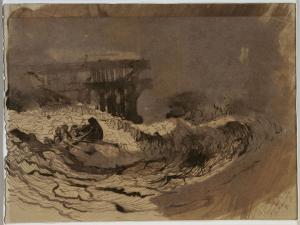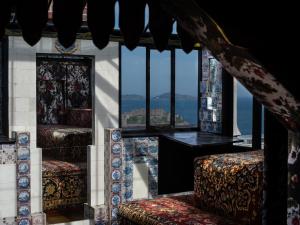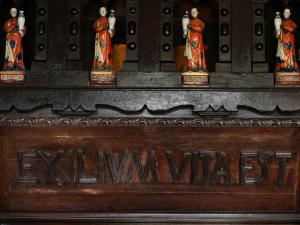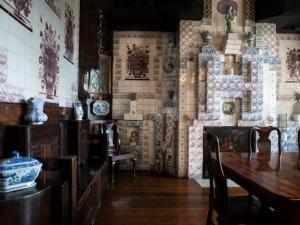An Artist's House
Victor Hugo, interior designer
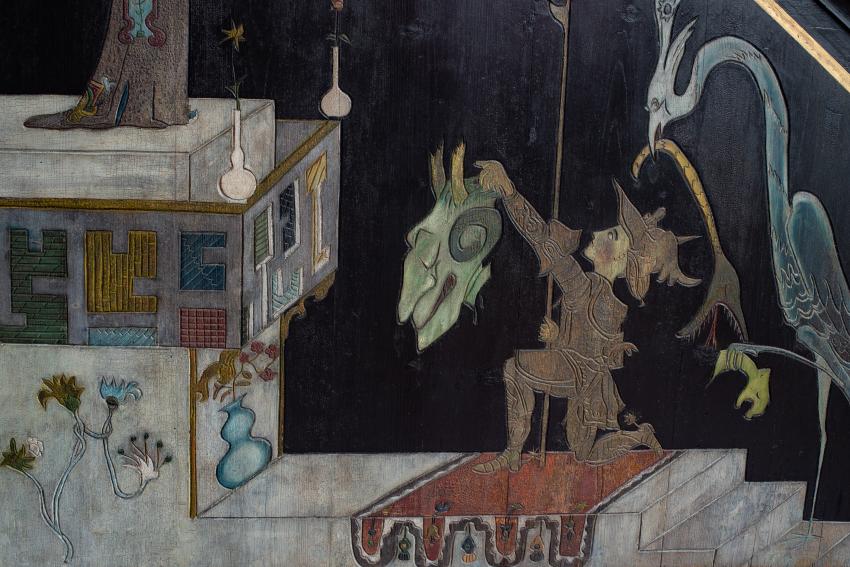
« My husband is very happy and completely immersed in his house. This house will be a poem. My husband engraves inscriptions, bears his soul on the walls of his house, he picks up the tools himself and puts his sweat into it. The result will be a monument raised by the great exile. ».
Victor Hugo always had a passion for interior design. Before his exile, he decorated his Parisian apartments himself, in the Romantic style, with great attention to detail. As a playwright, he was also interested in the stage settings of his plays. Especially since “décor” for Victor Hugo was not a matter of attractiveness but rather of conveying a personality, a spirit, or an artistic thought.
As soon as he acquired Hauteville House in 1856, Victor Hugo started massive refurbishment works, which lasted until at least 1859. Then followed the creation of the look-out room on the roof, which became his study. As soon as the work on the house was completed, photographs were taken and it became clear that it was a real work of art. The poet's eldest son, Charles, wrote a book about the house, which was published in 1864 under the title Chez Victor Hugo par un passant [At Victor Hugo’s House by a Passer-by].
However, although Victor Hugo was aware he was creating a work of art, he never recorded his approach to interior design. The décor he produced, however, is based on his own logic. Hugo did not leave any empty space. In each room, he worked with the entire space, including the walls, ceiling and floor. He operated by mixing materials that he liked to contrast: smooth, cold wood with velvety, warm fabrics; bright tiles with dark wood; naturalistic patterns with the silky or fluffy appearance of stylised textile patterns. The poet likes to use objects differently, either in the way they are positioned - panoramic wallpaper on the top of the walls and on the ceiling; plates and tapestries on the ceiling - or in the way they are used - chair backs used as pelmets above the windows, etc. This is a house of exile, a home that must be rebuilt. This is why Hugo attaches monumental importance to the hearth as the heart of the home, building fireplaces of wood in the Tapestry Room, tiles in the Dining Room, and gilded wood carvings and silks in the Red and Blue Drawing Rooms. This is a house of exile that must hold the memory of what has been left behind. By reusing objects brought from Paris, which survived the sale of the family furniture in 1852, memories become tangible parts of the décor. Examples include Antoine Rivoulon’s wooden frame depicting scenes from The Hunchback of Notre-Dame in the vestibule, the Sèvres service gifted by Charles X, engraved quotations from his works, etc. One room in particular connects back to his previous life. This is the Billiard Room, where Victor Hugo’s family portraits and drawings hang together. He framed these images with frames he painted himself and used them to create the “Souvenirs” series. The house did not remain closed in on itself, focused on a lost past, but opened up to life and the world through the greenhouses and glass roofs that Hugo added, including his famous look-out which became his writing space from 1862.
Thus, as an interior designer, Victor Hugo applied his own authentic style, concealing a symbolism that visitors may discover for themselves.

